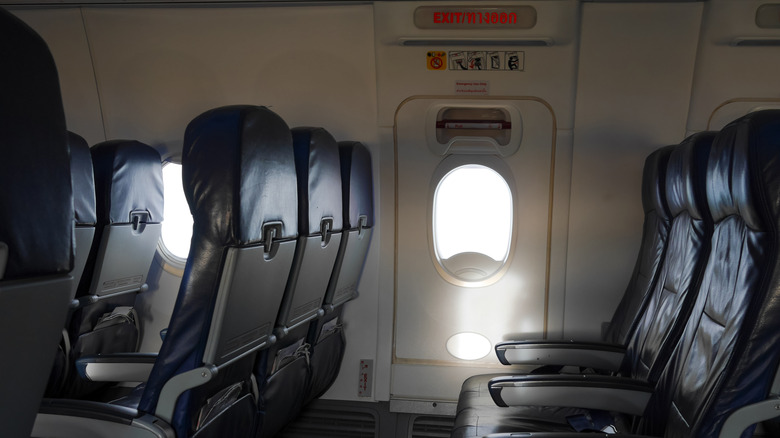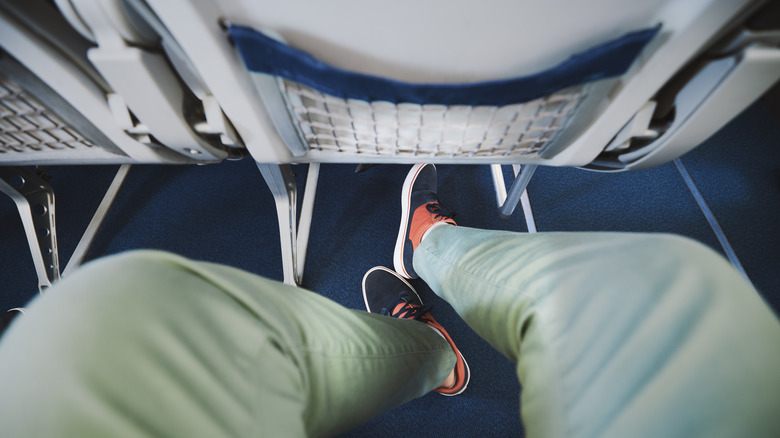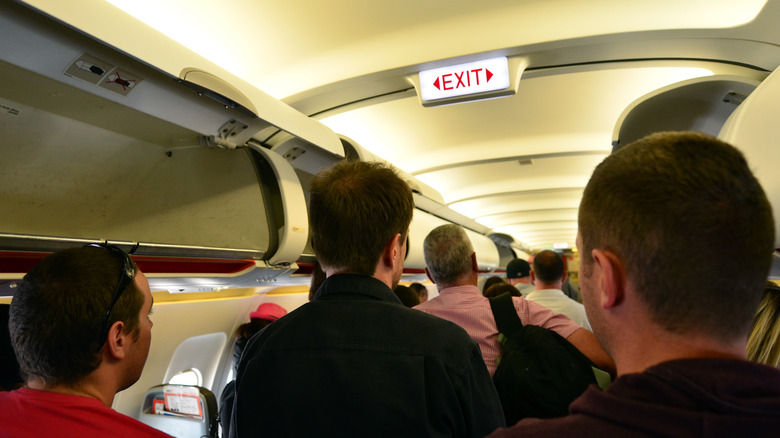What You Should Know Before Booking An Exit Row Seat For Your Flight
Nowadays, tiny airline seats can make flights uncomfortable for passengers, and getting the most comfortable seat possible makes a significant difference in the overall experience. For many, that can come with sitting in the exit row. There are many pros and cons, but also regulations; personal preferences on items such as comfort, pricing, and restrictions all factor into this choice. If you do end up sitting in the exit row, it is essential to understand the requirements and responsibilities that come with this extra legroom so you can be well-prepared.
The Federal Aviation Administration determines that in order to sit in the exit row, a passenger must be 15 or older and have the capacity to function without outside assistance (visual, hearing, or otherwise), read and understand instructions, orally communicate in English, and perform the physical exit row duties — like opening the door — adequately. The flight attendant may notice when you board if there are any potential issues with meeting these requirements.
After scanning your ticket, the attendant will likely ask you if you are willing and able to operate the exit doors — and assist others — in case of an emergency. This will happen once more when the flight attendant asks all exit row passengers for verbal confirmation on board. A simple yes is all they need to ensure that passengers will be able to use the exits efficiently in an emergency. After that, the flight should (hopefully) take place as normal — though your seat will likely come with some special conditions.
The positives of exit rows
If you're looking for an exit row seat, it's always a good idea to book your ticket in advance; these seats can sell quickly due to their popularity. One big selling point is the added legroom. Depending on the aircraft, the exit row configuration as well as legroom will vary; however, most will have quite significant increases in space compared to economy. This is great if you are above average height or like to stretch your legs. Also, for longer or overnight flights, sleeping can be more comfortable with the extra wiggle room (but on the flip side, keep in mind that the armrests may not move and the seat may not recline).
The exit row can also be a good option if premium seats are too pricey. While each airline does things differently, exit rows can cost more than basic economy because of the popularity of these seats — though still less than an upgrade to the main cabin or first class. Also, because of FAA regulations, no children can sit in the exit row, so there is no need to worry about crying babies in the seat next to you. Jetlagged passengers might consider that worth a few bucks on its own.
Finally, as unlikely as it is, if an emergency landing were to occur, you would be the closest to the exit and therefore have the chance to escape the aircraft first. This knowledge can help ease stress for anxious flyers.
Why you may want to avoid the exit row
Exit rows come with not only added responsibilities, but also some logistical drawbacks. One is carry-on storage; you will most likely have to place your carry-on bags in the overhead compartments. Having said that, this is typically only required for takeoff and landing, so once you're in the air, you can potentially grab whatever you need for the flight. Similarly, some flight attendants will ask you not to wear earbuds during takeoff and landing — but you should keep them handy at other times, because the exit row seats may be quite close to the engine.
Another downside is the potential proximity to a lavatory. When other passengers on the flight decide to stretch and leave their seats, many head toward the exit row and either stand partly in the extra space or wait for the lavatory, which is sometimes located right in front of the exit row. People crowding around your seat can be a turnoff. On the other hand, some may see easy access to the lavatory as a positive.
Finally, if you are looking for a view, the exit row may not be for you. There are very limited windows, and in some exit rows, none at all. And you might not want to sit next to the window anyway since cold air can leak through the exit door. In the end, you'll have to decide if all this is worth the ability to stretch your legs.


